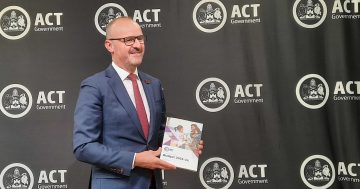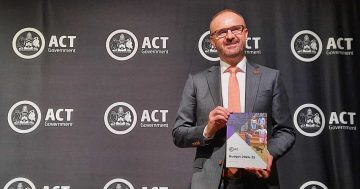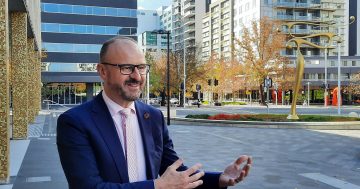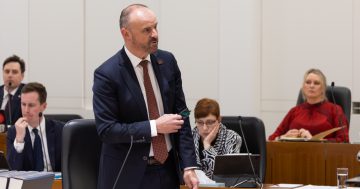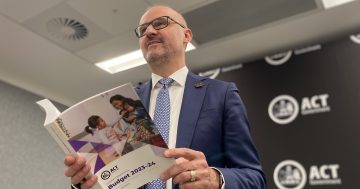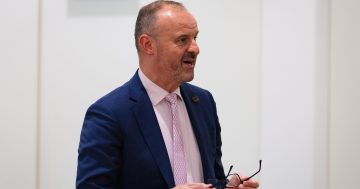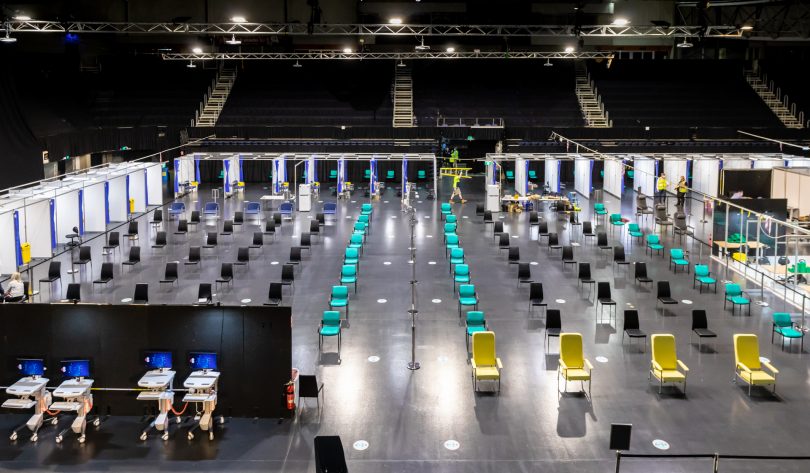
The Commonwealth-owned AIS Arena is being used as a COVID-19 Vaccination Clinic, but its reopening as an entertainment and sporting venue is a priority for the ACT Government. Photo: Michelle Kroll.
The ACT needs a change in Federal Government for it to get a fair deal on national infrastructure spending, Chief Minister Andrew Barr said.
Mr Barr noted that Coalition governments continued to shortchange the ACT when it comes to the spread of infrastructure funding across Australia.
He said Commonwealth infrastructure spending in the ACT was the lowest of any state or Territory – again – by some margin.
Of a nearly $18 billion national infrastructure spend, the ACT has received just $51 million, much of which will go to just one project – the duplication of Athllon Drive.
In comparison, $639 million went to Tasmania and $369 million was given to the Northern Territory.
“Despite the ACT being home to 1.68 per cent of Australia’s population, just 0.3 per cent of the Commonwealth’s infrastructure spending will make its way into the ACT in this budget.”
“This means the ACT Government will, once again, do the heavy lifting on job-creating infrastructure investments.”
Mr Barr said the Commonwealth had failed to invest in the AIS precinct, especially the reopening of the AIS Arena, and the precinct continued to face an uncertain future.
“This is an urgent priority for the ACT in the Federal election, and we will continue to advocate for a renewal partnership with the Commonwealth after the election,” he said.
The Minister for Homelessness, Social and Community Housing, Michael Sukkar, speaking at Wednesday’s Budget breakfast at Parliament House, would not answer a question from Region Media about why the ACT can’t get its fair share of infrastructure spending.
The Budget did find nearly $40 million over five years for the National Capital Authority to upgrade Scrivener Dam ($38.5 million over four years from 2022-23) and to honour key figures in Australia’s democracy.
A total of $1.3 million will also go to commissioning and installing new sculptures in the Parliamentary Triangle to commemorate the first two women and first Indigenous Australian elected to Federal Parliament.
An ACT Government spokesperson earlier said many other ACT projects deserved funding in the Budget, such as the AIS and National Cultural Institutions, especially the much-needed expansion of Questacon and repairs to the National Gallery and improvements to Commonwealth Park.
The spokesperson said the Budget could have also paved the way for an additional public service agency in the Gungahlin Town Centre, something Mr Barr had recently lobbied for with a prospectus sent to the Public Service Minister, Ben Morton.
The Commonwealth could also have partnered with the ACT Government to fund social housing renewal and expansion, and further health infrastructure.
Forgiving the $115 million in historic housing debt to the Commonwealth, and land and building debt of $2.2 million, could have enabled the savings on borrowing costs to be redirected to more public housing.
The spokesperson said the interest rate on the building and land debt of 12.6 per cent has recently been agreed to be reduced to 4.5 per cent and a fixed interest rate of 4.5 per cent applies to the housing debt, but the ACT cost of borrowing is significantly lower than these rates.
“The ACT Government has repeatedly called on the Federal Government to match our commitment to grow public housing, for example, by waiving historic housing debts, as was done for Tasmania,” the spokesperson said.
But Mr Sukkar said the Federal Government would only consider forgiving the debt if the ACT Government had a plan to reduce barriers to new housing and increase supply.
Liberal Senator Zed Seselja has trumpeted Commonwealth spending in the ACT over previous budgets, including the $115 million Monaro Highway upgrades, $51 million for the Tuggeranong Parkway, $26.5 million for the duplication of William Hovell Drive, the $500 million redevelopment of the Australian War Memorial, and $137 million for upgrades to Commonwealth Avenue Bridge.
But the ACT Government spokesperson said infrastructure investment from the Commonwealth in the ACT remained consistently behind the per capita investment made into other states and territories.
Analyses of the Budget’s national infrastructure spending show that it is skewed towards must-win marginal seats, and just 15 per cent have been endorsed as priorities by Infrastructure Australia.












